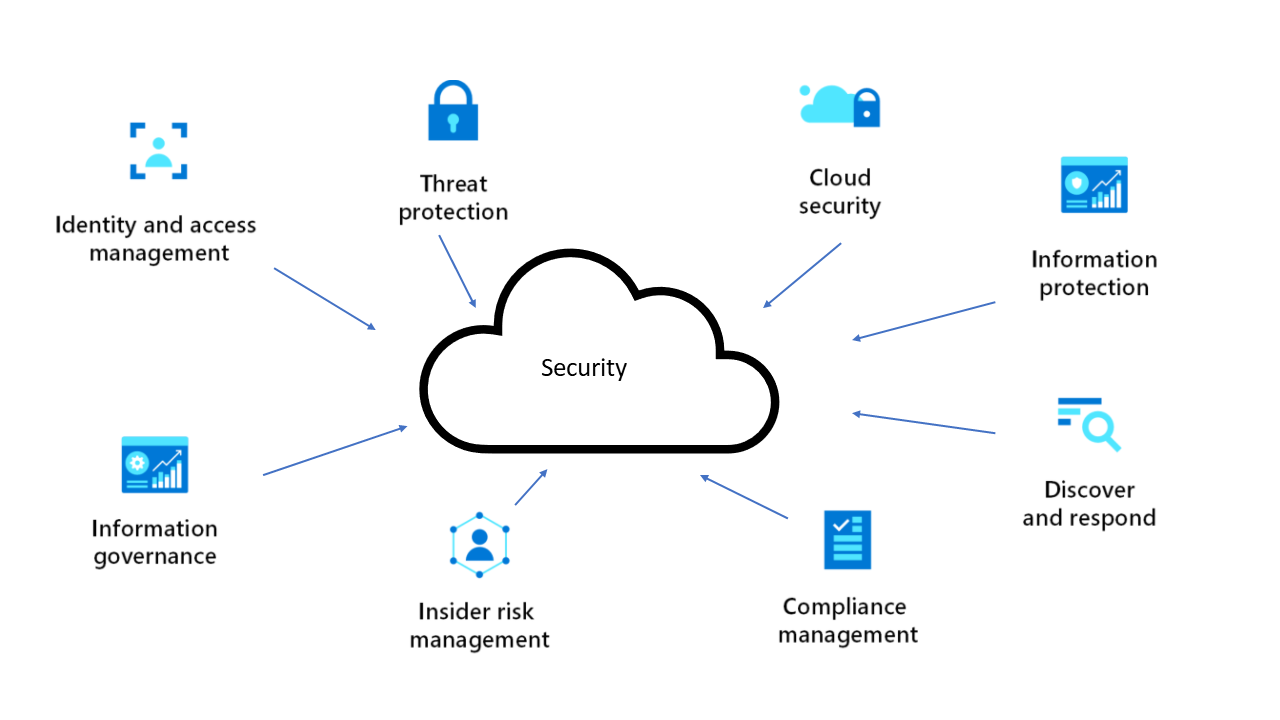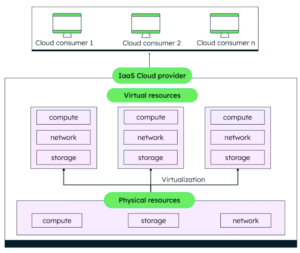Designing a Resilient Cloud Computing Security Architecture
As more organizations move critical workloads to the cloud, building a strong security architecture is more important than ever. Yet many struggle to move beyond basic controls and put a framework in place that tackles both current and future threats. Effective cloud security isn’t just about individual tools, though. The goal is to create a connected system that protects your assets while helping your business grow.
In this guide, we’ll break down the key parts of cloud security architecture, from core principles to practical strategies. We’ll also look at how ideal frameworks and best practices can help build resilient cloud environments ready to handle evolving threats.
3 core principles of cloud security architecture
The backbone of any solid cloud computing security setup boils down to three key principles that guide every decision and strategy:
1. Defense in depth
A layered security approach is one of the best ways to protect cloud environments. Instead of depending on just one security measure, defense in depth uses multiple layers of protection throughout the architecture. For instance, network security groups might act as the first line of defense, but additional layers like application firewalls, encryption, and identity management all work together to provide well-rounded data security.
2. Principle of least privilege
This rule of cloud security ensures that users, systems, and applications get only the access they need—and nothing more. In a cloud environment, this is especially important because resources change dynamically, and misconfigurations can happen gradually over time. Following the principle of least privilege means regularly reviewing and fine-tuning access controls across all cloud resources and services.
3. Security by design
Cloud systems need to focus on security right from the beginning. Embedding controls into infrastructure as code (IaC) templates ensures everything is consistent, while automated security testing in development pipelines catches problems early. Policy-as-code tools like Open Policy Agent (OPA) and HashiCorp Sentinel enhance this approach by automatically enforcing security policies during deployment. These tools can validate configurations against organizational standards, preventing non-compliant resources from being deployed and creating a guardrail system that works alongside your IaC workflows. Add continuous monitoring to keep an eye out for threats, and make sure systems can handle failures with secure backups, failover mechanisms, and emergency access plans.
BONUS: Zero Trust Architecture (ZTA)
The Zero Trust model is also important for cloud security with its “never trust, always verify” approach. This model constantly checks users, devices, and applications to ensure access stays secure in ever-changing cloud environments. Big cloud providers back this up with tools like identity-aware proxies, validation services, and microsegmentation.
The importance of shared responsibility
Cloud security differs from traditional on-premises security due to the shared responsibility model. Cloud providers secure the infrastructure, while organizations handle applications, data, and access management.
Responsibility varies by service model. With Infrastructure as a service (IaaS), you manage everything above the hypervisor, like OS security, networks, and applications. In platform as a service (PaaS), the provider secures the OS and middleware, but you’re responsible for apps and data. In software as a service (SaaS), most security is managed by the provider, but you oversee data, user access, and compliance.
Containerized workloads, like Kubernetes setups, add complexity. Managed services like Amazon’s EKS and Google’s GKE handle the control plane, but you’re responsible for container images, network policies, and runtime environments. For example, without properly configured Kubernetes network policies, pods within your cluster might communicate freely with each other, potentially allowing lateral movement if one container is compromised. Similarly, misconfigured role-based access control (RBAC) could grant excessive permissions to service accounts, increasing your attack surface. That’s where DoiT’s expertise with EKS and GKE helps—filling security gaps and guiding you through your responsibilities.
Essential components of modern cloud security architecture
Building strong cloud security means bringing together several interconnected pieces that work together easily. Instead of looking at these as separate parts, successful organizations weave them into a unified security framework.
Identity and access management (IAM)
Cloud security starts with solid identity management. Today’s IAM includes controls such as attribute-based access control (ABAC) and just-in-time access provisioning. Privilege creep, where users end up with more access than they actually need, is a common issue. This is especially tricky in Kubernetes, where pod security policies and service accounts can complicate things. To keep IAM effective, it’s important to stay on top of access management with regular access reviews, ongoing monitoring, Multi-Factor Authentication (MFA) enforcement, and automated tools to catch and fix excessive permissions.
Network security architecture
Securing cloud networks requires a different mindset than traditional perimeter-based security. Following Zero Trust principles is key—treating every part of the network as if it could be compromised.
Here are some important components:
- Use cloud-native tools like Virtual Private Clouds (VPCs) and subnet isolation for network segmentation. Match your segmentation to your application architecture, and consider micro-segmentation to keep workloads isolated based on their security needs using implementation tools like AWS Security Groups and Azure NSGs.
- For containerized apps, a service mesh can handle encryption, authentication, and authorization between services. Tools like Istio (for GKE) or AWS App Mesh (for EKS) work well, but they do require some know-how with networking and container orchestration.
Security monitoring and operations
Cloud environments produce huge amounts of security data that need to be collected, analyzed, and acted on. The real challenge is turning that data into actionable insights. To do this, you need:
- Real-time threat detection systems that recognize cloud-specific attack patterns, like spotting unusual API calls that could signal credential theft or container escape attempts, and
- Automated response tools that can handle threats without disrupting normal business operations, such as revoking compromised credentials or isolating affected workloads while keeping applications running smoothly.
Cloud security posture management (CSPM)
CSPM tools provide continuous security assessment and compliance monitoring. The key challenge here is maintaining security standards across multiple cloud providers and services. Organizations need tools that can:
- Spot and fix misconfigurations across cloud providers
- Keep track of compliance with security policies and regulations
- Give a clear view of security risks across the entire cloud environment
Container and Kubernetes security
As containerized applications become the norm, securing them has become a key part of cloud security. Some common challenges include:
- Making sure container images are free of vulnerabilities and properly set up
- Setting up solid network policies between containers and external services
- Managing secrets and sensitive configuration data in Kubernetes
- Keeping an eye on container runtime behavior for any potential security issues
Cloud providers typically offer native tools to enhance container security. AWS includes Amazon ECR for image scanning and App2Container for secure migration, while Google Cloud provides Container Analysis and Binary Authorization for trusted deployments, for instance. Combined with third-party tools, these solutions strengthen protection for containerized workloads.
What you’re up against: cloud security threats and vulnerabilities

An inherent balance between risk and opportunity exists when it comes to cloud security. For this reason, it’s crucial for your organization to recognize the potential threats and vulnerabilities it might encounter.
Let’s break down how security risks show up in IaaS, PaaS, and SaaS deployments—and what that means for your security setup.
Infrastructure as a service (IaaS)
In IaaS environments, organizations are in charge of managing everything from the operating system up, resulting in a larger attack surface. Account compromise is a common issue, whether it’s from stolen credentials or poorly configured IAM roles, and attackers can use these to deploy unauthorized resources or access sensitive data. Setups such as these are especially risky when they have multiple accounts, where privilege escalation paths might not be immediately obvious.
One of the biggest security challenges involves misconfigurations, like exposed storage buckets or overly permissive security groups. Plus, the constantly changing nature of cloud infrastructure makes it tough to keep configurations secure all the time.
Platform as a service (PaaS)
PaaS environments come with their own set of challenges, especially when it comes to the shared responsibility model. While providers take care of infrastructure and application security, it’s ultimately up to organizations to secure their applications and data.
One big risk is dependency vulnerabilities in frameworks and libraries. With the fast pace of development in PaaS environments, keeping systems updated and properly configured is a challenge.
API security is another critical area since PaaS apps often depend heavily on internal and external APIs. Not having proper security controls in place can lead to data breaches or unauthorized access to app features.
Software as a service (SaaS)
Even though SaaS providers take care of most security measures, organizations still face some big risks. Misconfigurations in data sharing and access control could accidentally expose sensitive information, especially in collaborative settings where users might unintentionally share data with the wrong people.
On top of that, integration security is a major concern as companies link different SaaS apps together. Every integration point can become a potential vulnerability, so preventing misconfigurations requires careful attention.
Cross-service attack patterns
Cloud architectures often mix different service models, which can lead to some tricky security challenges. For instance, supply chain attacks can hit multiple service levels at once. A compromised container image in an IaaS setup could end up impacting PaaS services that rely on those containers.
Identity-based attacks are also getting smarter, especially in hybrid environments. Attackers can take advantage of trust relationships between service models to move sideways through an organization’s cloud infrastructure.
Kubernetes-specific threats
Container orchestration environments come with their fair share of security challenges, like control plane attacks in self-managed Kubernetes setups or container escape vulnerabilities that could expose hosts or other containers. These issues become even riskier in multi-tenant setups where different applications share the same hosts.
An introduction to cloud security frameworks

Cloud security frameworks provide a structured way to tackle security risks without starting from scratch. These frameworks help organizations build solid security systems while addressing real-world challenges.
MITRE ATT&CK for cloud
MITRE ATT&CK, a powerful tool for cloud environments, maps out attack techniques and suggests defensive strategies. Take privilege escalation risks, for example. ATT&CK offers insights like:
- How attackers exploit IAM misconfigurations
- Ways to detect these activities
- Preventive steps to reduce risks
This approach helps organizations focus on specific threats rather than broad, one-size-fits-all controls. For instance, securing Kubernetes clusters becomes more manageable with container-specific guidance to tackle threats like container escapes or control plane weaknesses.
Cloud Security Alliance (CSA) Cloud Controls Matrix
The CSA’s Cloud Controls Matrix (CCM) is all about aligning security measures with compliance standards like GDPR and HIPAA. It provides clear control objectives across various domains and adapts to different service models. This makes it especially handy for hybrid environments with multiple cloud services in play.
NIST cybersecurity framework cloud profile
NIST’s framework tailors traditional security practices to fit the unique needs of the cloud. Key areas of focus include:
- Continuous monitoring and automation
- Identity-focused security
- Protecting data across different cloud boundaries
Cloud-native application protection platforms (CNAPPs), like Prisma Cloud and Lacework, offer NIST-aligned security for cloud infrastructure, containers, and applications. These platforms make it easier to handle compliance, manage vulnerabilities, and detect threats, simplifying risk management across cloud environments.
The framework also offers straightforward steps for implementing Zero Trust principles and improving security over time.
Best practices for designing secure cloud architectures
Let’s turn security frameworks and threat insights into practical steps to boost your cloud security architecture.
Securing container workloads
Container security needs care at every step of the lifecycle. Start with secure base images, automate vulnerability scans, and check Software Bill of Materials (SBOMs) in your build pipeline. Running on EKS or GKE? Make sure to set up pod security policies, network controls, and admission controllers. DoiT can help fine-tune these measures for your setup while keeping workloads efficient.
Security monitoring and response
Create a solid monitoring strategy that delivers real, actionable insights. Set up context-aware monitoring that understands your application architecture and can tell the difference between normal and suspicious behavior. Go beyond basic alerts by including:
- Behavior-based anomaly detection
- Monitoring service-to-service communication
- Analyzing user activity
- Tracking resource usage
Cloud-native security information and event management (SIEM) tools like AWS Security Hub, Amazon Detective, and Azure Sentinel make it easier to spot complex attack patterns by analyzing security data across your entire cloud setup. They work with your existing services, offering unified dashboards and coordinated responses to help you manage security more effectively.
Network security enhancement
Stay ahead of evolving threats by upgrading your network security with micro-segmentation. Prioritize service-based controls like authentication, encrypted communication, detailed traffic filtering, and flexible access based on service identity.
Charting a secure path forward in the cloud

Building strong cloud security, with all its challenges, is an ongoing process. As cloud technologies evolve and new threats emerge, organizations need flexible security frameworks that can adapt and grow with their needs.
Working with experienced cloud security pros can make a big difference. At DoiT, our team of cloud architects and security specialists can evaluate your current security setup, pinpoint vulnerabilities, and put the right controls in place for your unique environment while avoiding bad practices. Whether it’s managing containerized workloads on EKS and GKE or navigating multicloud deployments, we’re here to help you create a secure architecture that protects your assets and supports innovation.
Contact DoiT for a full assessment and get started on strengthening your cloud security today.

